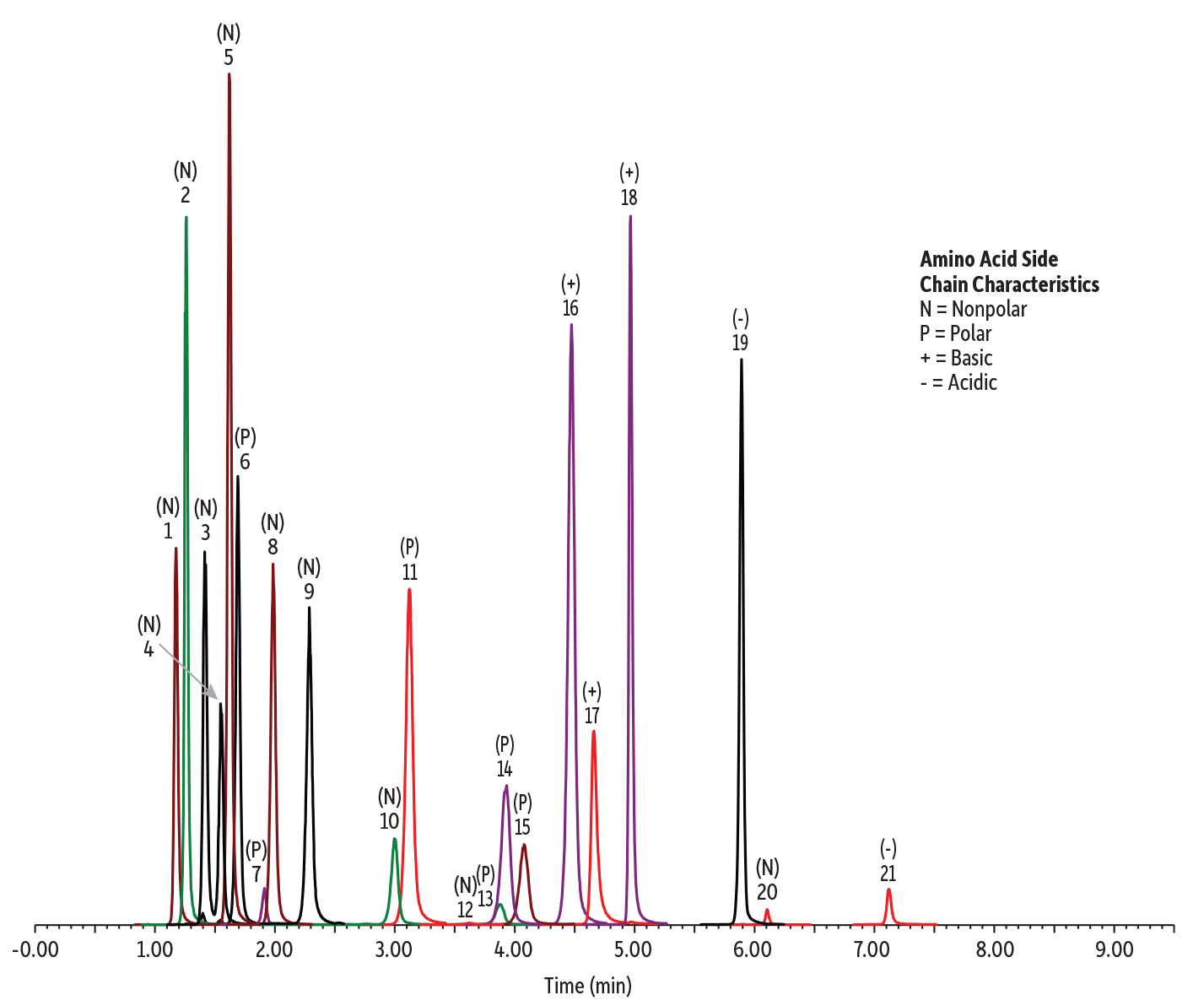Fast, Direct Analysis of Underivatized Amino Acids in Infant Formula
Featured Application: Underivatized Amino Acids on Raptor Polar X

- Simple, one-step sample preparation for direct analysis of underivatized amino acids.
- Simultaneous analysis of nonpolar, polar, positively charged, and negatively charged amino acids in a short 10-minute run.
- Well-designed gradient separates contaminants from target analytes.
To ensure that nutritional requirements are met, reliable analytical methods are needed for the accurate determination of free amino acids in infant formulas. Precolumn derivatization followed by reversed-phase LC analysis is a typical approach, with derivatization being necessary due to the lack of chromatographic retention and poor sensitivity for free amino acids. However, these methods are often time-consuming and labor intensive. The use of perfluorinated acids as ion-pairing reagents to improve the retention of underivatized amino acids on a C18 column is another common technique, but this practice can negatively impact the chromatographic system and mass spectrometer.
In the simpler approach shown here, underivatized amino acids can be measured directly—following a single-step sample preparation procedure—using a Raptor Polar X column paired with an MS/MS detector. Raptor Polar X columns feature a hybrid phase chemistry (HILIC and ion exchange) that provides the balanced retention needed for simultaneous analysis of a wide range of analyte chemistries. As demonstrated, underivatized amino acids with nonpolar, polar, positively charged, and negatively charged side chains were adequately retained and then quickly eluted using a 10-minute gradient. This gradient also separated amino acid system contaminants from target analytes, adding ruggedness to the method. By following this method, time- and labor-intensive sample preparation procedures, which can include expensive derivatization kits, are replaced by a simple protein precipitation and direct analysis of the resulting extract. Direct analysis of underivatized amino acids on a Raptor Polar X column provides excellent results in a fast, easy workflow, making this a beneficial alternative to traditional methods.
FFFA3436A-UNV


